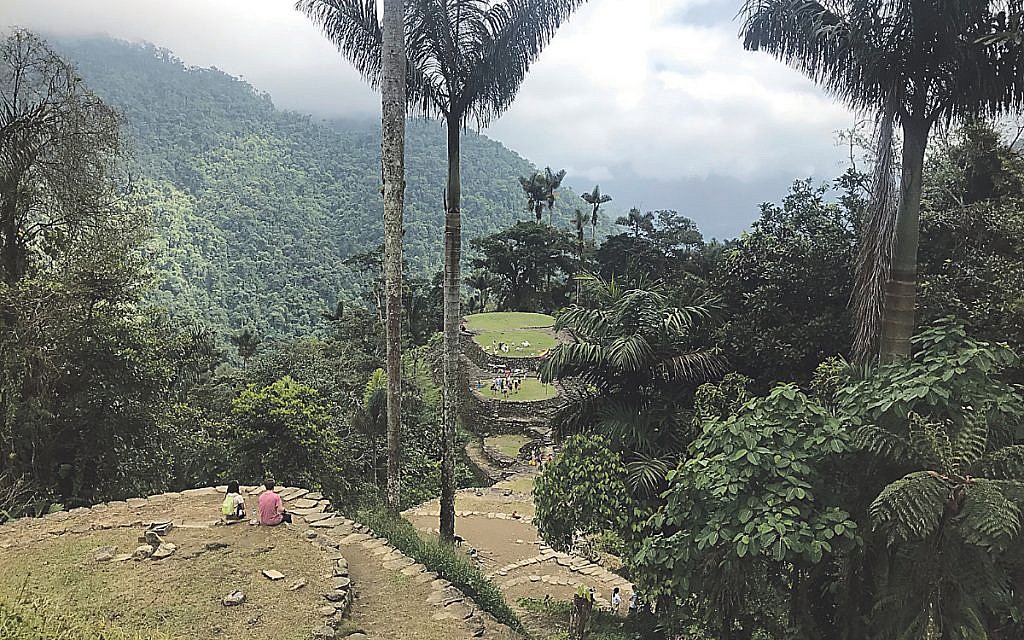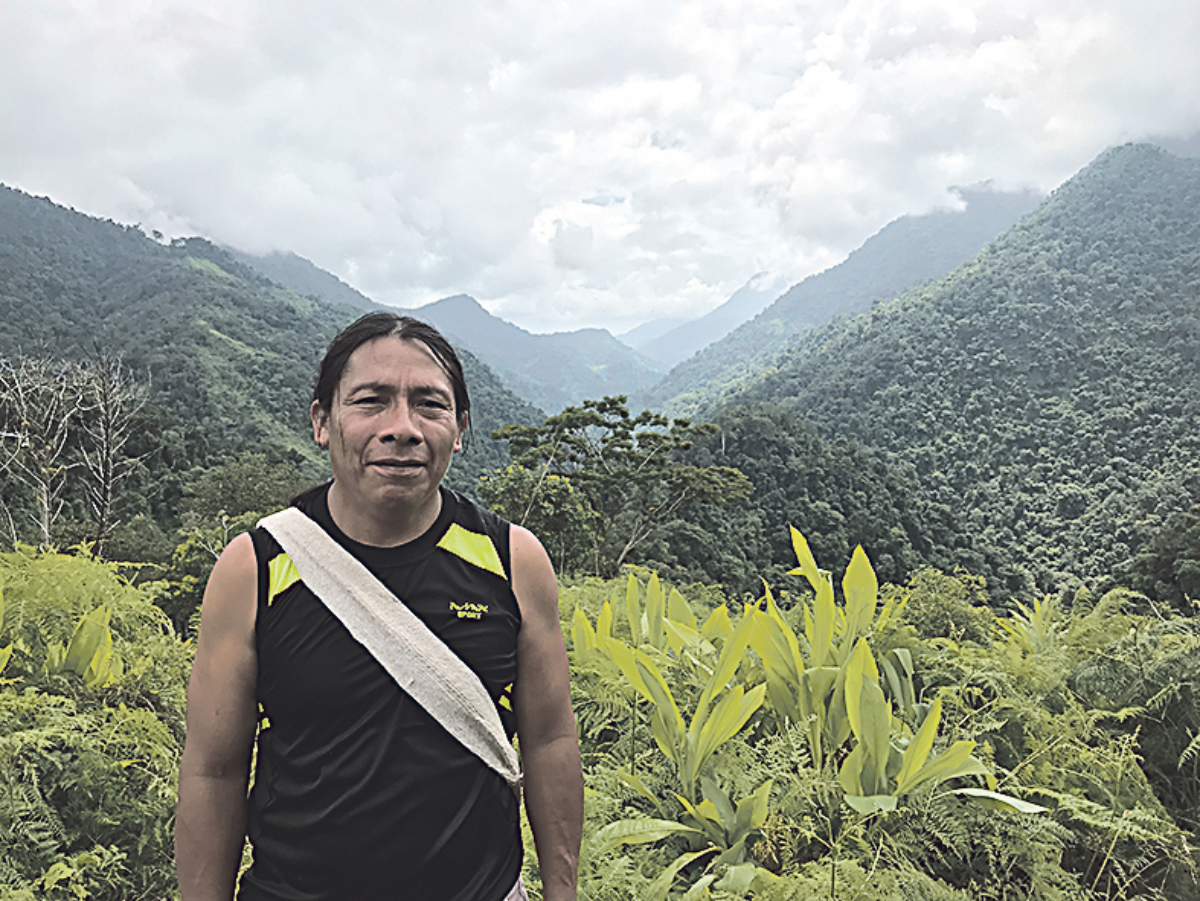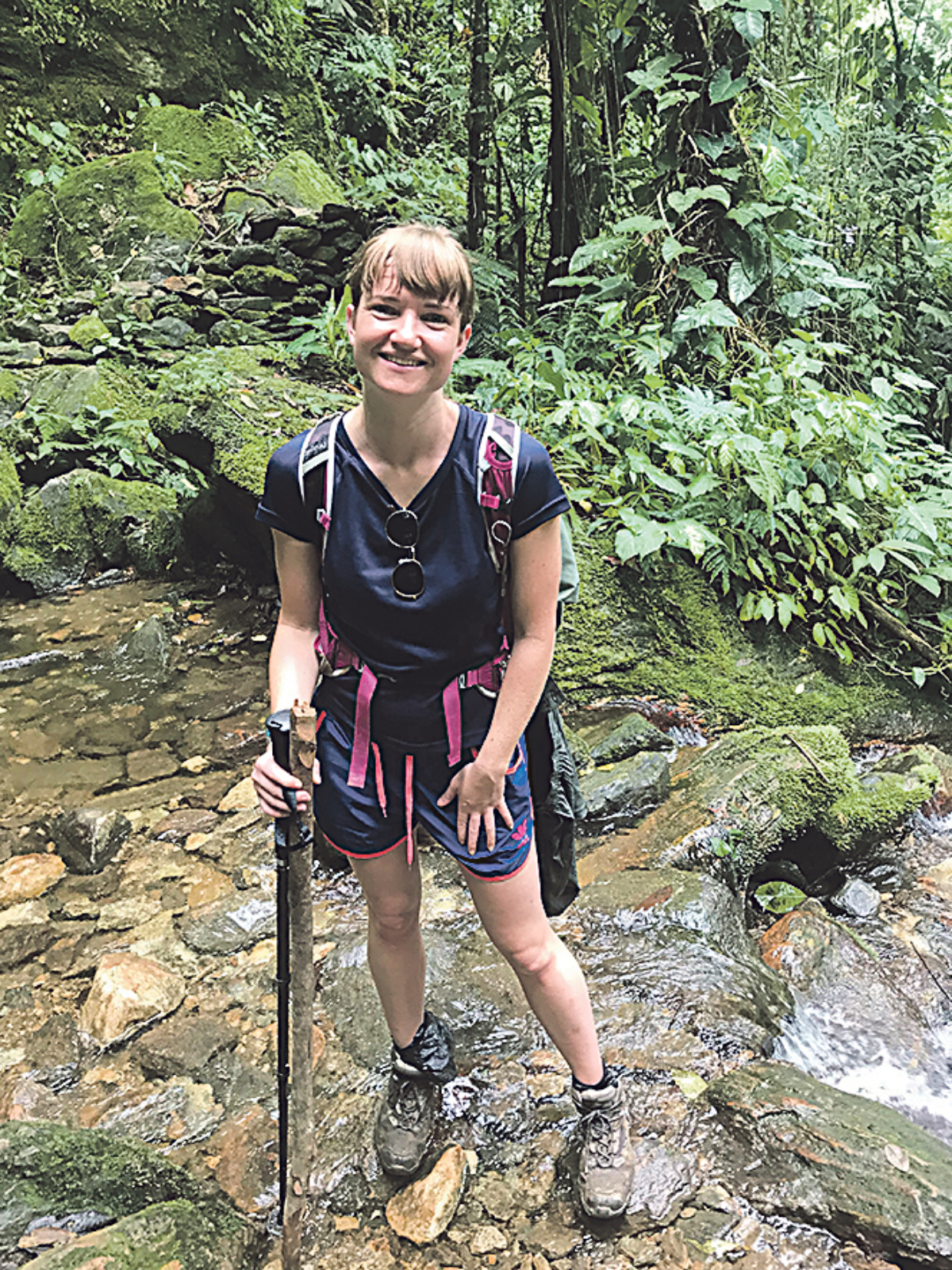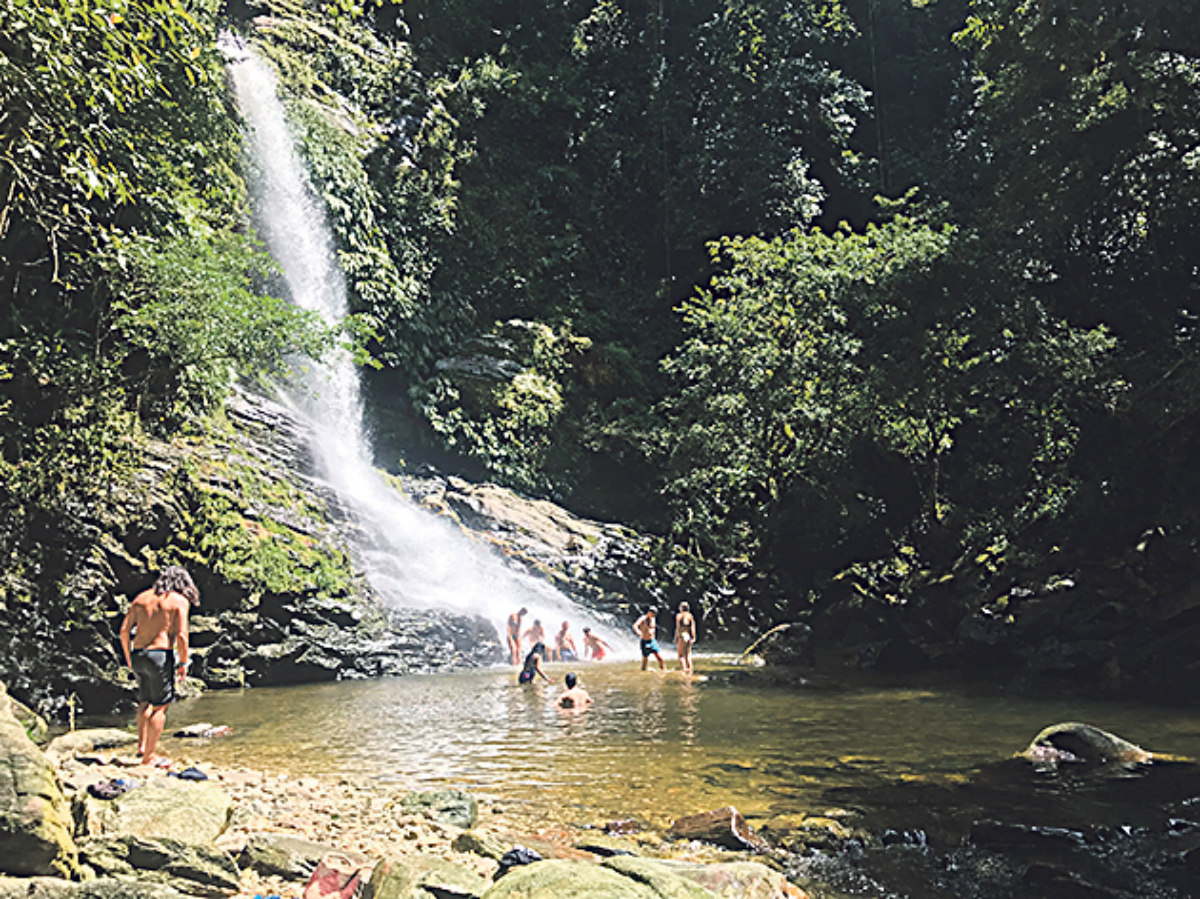Jungle all the way! Finding Colombia’s ‘Lost’ City and indigenous tribes
Sophie Eastaugh goes off the beaten track through the dense green forest of the Sierra Nevada de Santa Marta in South America
The first drops hit my skin with sweet refreshment. Then a deluge rips through the tropical air, sluicing away the sweat and dust of the humid jungle.
An image of my raincoat, naively left back at the hotel, flashes through my mind as I fashion a poncho from a black bin bag.
We are trekking to the ‘Lost’ City, a challenging five-day quest on hilly pathways through the dense green forest of the Sierra Nevada de Santa Marta of Colombia. With the sparkling Caribbean on the horizon, these are the foothills of one of the world’s highest coastal mountains.
Get The Jewish News Daily Edition by email and never miss our top stories Free Sign Up
The narrow trail turns to mud as we slip and slide around red-clay boulders, hiking poles stabbing the banks like slalom skiers.
Our destination is an ancient sacred settlement, known locally as Tayuna. Built by the Tairona people around 800AD, it is centuries older than Machu Picchu but receives just a fraction of the tourist numbers.
That’s changing fast. This lush triangle of mountains and forest, once named the world’s most irreplaceable nature reserve, boasts 30 rivers and 28 endemic species of bird. Increasing numbers of travellers are getting a taste of its magic.
It’s not long before the jungle heat returns. On our third day, we rise before dawn to climb to the city’s summit, a steep, Gladiator-style eliminator of 1,200 stone steps. The ascent is made for tiny feet; the Tairona averaged only 4ft 2ins tall.
Panting, we arrive at the first stone circle, one of more than 100 that contained the Tairona’s homes, temples and trading activities.
From the top of the site, I gaze across a network of grass terraces surrounded by a spectacular panorama of green. Two flights and three phone-free days from London, this feels like a mystical parallel world.
José, our Wiwa guide, explains: “The Tairona chose this spot because it was safe, the mountains on one side and the river bank on the other.”
The Wiwa are one of the four indigenous communities of the forest, along with the Kogi, the Arhuaco and the Kankuamo, all of them direct descendants of the Tairona. They see the Sierra Nevada as the “heart of the world” and themselves as the guardians of nature.
With the beauty of this jungle it’s not hard to see why but sadly for the Lost City, the site wasn’t protected enough. Spanish conquistadores arrived in the late 1500s and their attempts to impose Catholicism drove the Tairona into the mountains, leaving the site abandoned.
It wasn’t rediscovered until 1972, when grave robbers stumbled on it in their hunt for buried gold. Examples of their pillaged gleaming earrings, nose rings and ornaments can be seen in Bogota’s impressive Gold Museum today.
The first Jews arrived in Colombia during the same period of Spanish colonisation. Many had also been forced to convert to Catholicism and, perhaps surprisingly, sought freedom in Colombia’s northwest.
In the suburbs of Medellín, a group of families have only in the past 15 years rediscovered their hidden Jewish heritage and joined other Anusim in converting to the religion taken from their ancestors.
Fascinatingly, a study by the University of Antioquia in 2000 found that 14 percent of men in the state had DNA markers showing links to the Cohanim.
Colombia’s Jewish population today is small, some 5,500 strong and centred mainly around Bogotá and Baranquilla. Recently, thanks to the country’s peace and relative prosperity, a number of Jews from Venezuela have escaped a crippling economy there to make Colombia their home.
Back in the jungle, the indigenous communities are finding ways to preserve their unique heritage while fighting for their future. As evidence and after a swim in an idyllic waterfall, our journey continues to a Wiwa village that last year started to welcome travellers for the first time.
In a jade green valley once thick with cannabis and coca but now sugar cane, coffee and cacao, Wiwa leaders have defied the odds to establish a growing community, Gotsezhi.
On arrival, we receive a traditional blessing from the village’s spiritual leader before feasting on a meal of fried fish and rice.
Sitting in shaded hammocks by the stream, the Wiwa leaders explain that the new venture isn’t only helping to support local families but also their long-term goal of buying back the whole of their ancestral lands – an ongoing process largely conducted by the Colombian government under indigenous pressure.
Lorenzo Gil, known as Awimaku in the Wiwa language, founded the Sierra Nevada’s first indigenous travel company, Wiwa Tours, with his brothers. It has now teamed up with G Adventures and its not-for-profit arm, Planeterra, to bring more travellers to Gotsezhi.
“The tourists who come here to discover our way of life, to swim in our waterfall, it’s a way to send a message to the world that we’re still alive, still fighting to protect our identity and culture,” says Awimaku.
“By coming here you’re taking part in strengthening our community. And that makes us very happy.”
Sophie’s travel tips
Sophie travelled with G Adventures, which offers a seven-day Colombia-Lost City Trekking tour starting from £499 per person, excluding flights. Package includes six nights’ accommodation and breakfast, five lunches and four dinners, as well as a G Adventures chief experience officer and indigenous guide. Visit gadventures.co.uk for more information.

Thank you for helping to make Jewish News the leading source of news and opinion for the UK Jewish community. Today we're asking for your invaluable help to continue putting our community first in everything we do.
For as little as £5 a month you can help sustain the vital work we do in celebrating and standing up for Jewish life in Britain.
Jewish News holds our community together and keeps us connected. Like a synagogue, it’s where people turn to feel part of something bigger. It also proudly shows the rest of Britain the vibrancy and rich culture of modern Jewish life.
You can make a quick and easy one-off or monthly contribution of £5, £10, £20 or any other sum you’re comfortable with.
100% of your donation will help us continue celebrating our community, in all its dynamic diversity...
Engaging
Being a community platform means so much more than producing a newspaper and website. One of our proudest roles is media partnering with our invaluable charities to amplify the outstanding work they do to help us all.
Celebrating
There’s no shortage of oys in the world but Jewish News takes every opportunity to celebrate the joys too, through projects like Night of Heroes, 40 Under 40 and other compelling countdowns that make the community kvell with pride.
Pioneering
In the first collaboration between media outlets from different faiths, Jewish News worked with British Muslim TV and Church Times to produce a list of young activists leading the way on interfaith understanding.
Campaigning
Royal Mail issued a stamp honouring Holocaust hero Sir Nicholas Winton after a Jewish News campaign attracted more than 100,000 backers. Jewish Newsalso produces special editions of the paper highlighting pressing issues including mental health and Holocaust remembrance.
Easy access
In an age when news is readily accessible, Jewish News provides high-quality content free online and offline, removing any financial barriers to connecting people.
Voice of our community to wider society
The Jewish News team regularly appears on TV, radio and on the pages of the national press to comment on stories about the Jewish community. Easy access to the paper on the streets of London also means Jewish News provides an invaluable window into the community for the country at large.
We hope you agree all this is worth preserving.
-
By Laurent Vaughan - Senior Associate (Bishop & Sewell Solicitors)
-
By Laurent Vaughan - Senior Associate (Bishop & Sewell Solicitors)
-
By Laurent Vaughan - Senior Associate (Bishop & Sewell Solicitors)
-
By Laurent Vaughan - Senior Associate (Bishop & Sewell Solicitors)

























